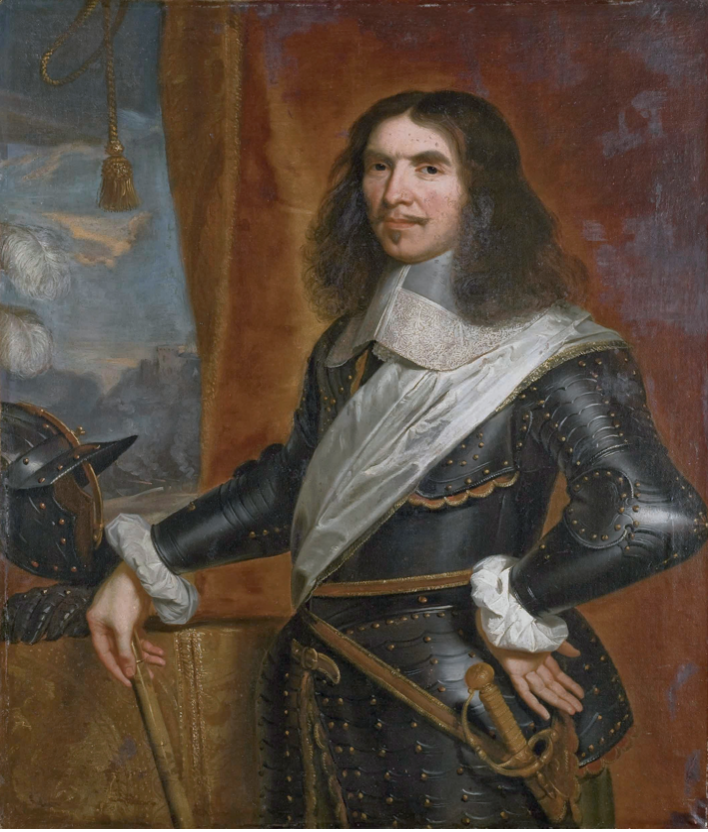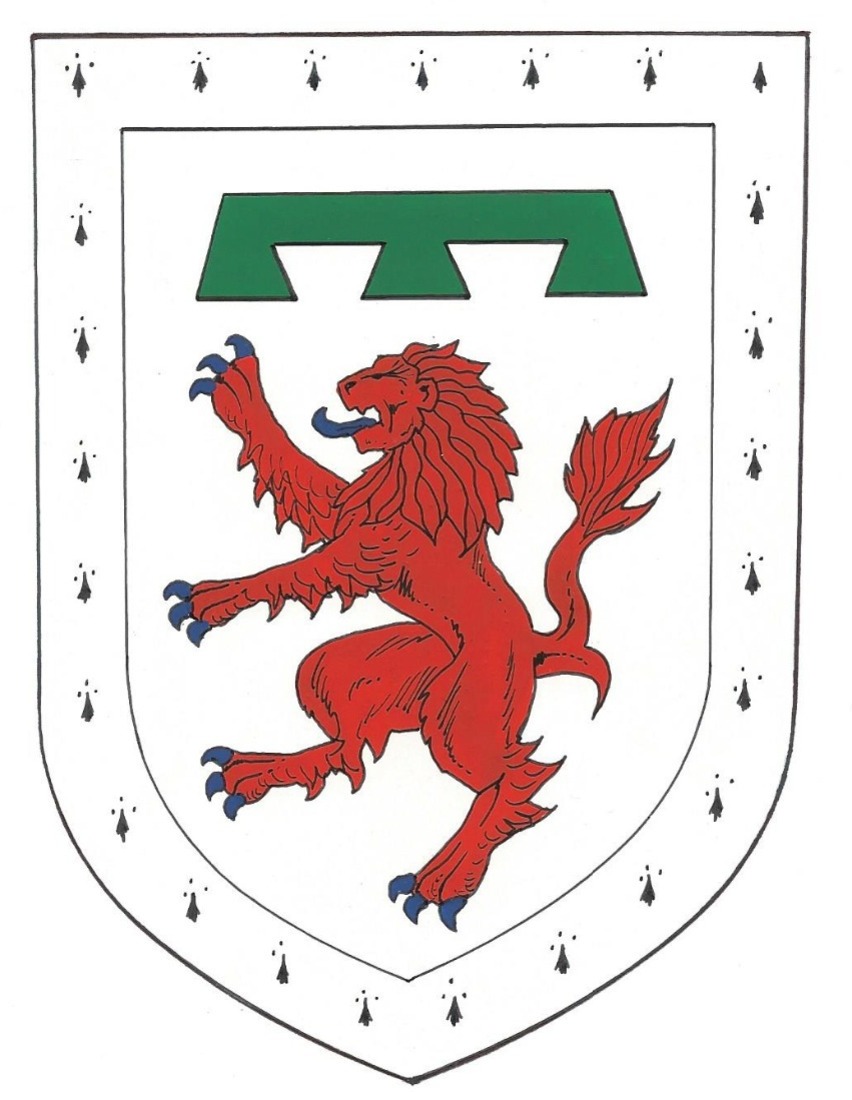Henri de la Tour Bouillon
Sovereign Grand Commander 1640-1675


Henri de la Tour Bouillon d` Auvergne, Viscount de Turenne,* often simply referred to as Turenne, the second son of the Protestant Henri de la Tour duc de Bouillon, Sovereign Prince of Sedan and his second wife Elizabeth, daughter of William the Silent, Prince of Orange, was born in Sedan in September 1611. He made his reputation as an outstanding soldier on the battlefields of the Thirty Years War becoming the most illustrious member of his family by far and being thought of as a national hero in his native France, so much so that Napoleon Bonaparte called him the greatest military leader in history.
Turenne was a sickly child, who was unable to talk until he was four years old and subsequently always had an impediment in his speech. Educated as a Huguenot he was academically poor but did love geography and to read about Roman military history as well as the exploits of Alexander the Great. At this stage of his development he was always in the shadow of his elder and stronger brother, however this changed when in his teens he became physically stronger and so after his father’s death in 1623 and his brother becoming the new Duke; Turenne was packed off to learn the art of war with his uncle Frederic Henri of Nassau** who succeeded his brother Maurice as Stadtholder, Prince of Orange in 1625 and so the young Turenne began his military career as a private in that prince’s bodyguard during the Eighty Years War.
Such was young Henri`s progress that by 1626 he was made a captain by his uncle and in 1629 had won a special commendation for his skill and courage at the Siege of S`Hertogenbosch in southern Netherland. In 1630 he left the Netherlands to take up military service with the French, partly for more experience and promotion and partly to please his mother by showing loyalty to the Bouillon dominion and to the French crown.
Cardinal Richelieu the power behind the throne in France in those days made him Colonel of an infantry regiment and his first engagement on behalf of France was during the Thirty Years War, fighting with the army of Lorraine laying siege to and eventually taking the large fortress of La Motte in Lorraine. As a result of his extraordinary courage in this campaign he was promoted to marechal-de-camp (equivalent of Brigadier).
Despite being a Catholic Cardinal in a predominately Catholic country, Richelieu in a somewhat surprising but nevertheless pragmatic move had employed the French army in support of the Protestant armies of Sweden and the German Principalities as a means of establishing French superiority in Europe and to neutralise Catholic Austria and Spain, the traditional enemies of France.
In 1635 Turenne was involved in a number of campaigns including the siege of Mainz where he once again distinguished himself and in 1636 during the storming of Saverene, where he was seriously wounded. He recovered sufficiently to take part in the Flanders campaign of 1637 and in 1638 the assault on Breisach, the strongest fortress
on the Rhine As Breisach, Richelieu offered Turenne one of his nieces as his wife, an offer he politely refused on account of her being Catholic.
Richelieu then involved Turenne in the Italian campaign between 1639 and 1640 where again his skill and daring resulted in further promotion to Lieutenant General. It was in November 1639 that Turenne fought in northern Italy in the famous rearguard action called the battle of “Route de Quiers”.
Also, in1640 the year he became Sovereign Grand Commander of our Order and following his success earlier that year with Henri of Lorraine, Richelieu entrusted him with command of the French campaign in Italy resulting in his capture of Turin with his exploits during this particular campaign confirming his reputation still further, particularly when in 1641 he commanded troops taking Coni (Cuneo), Ceva and Mondovi. In 1642 he served as second in command of the French army when it conquered Roussillon near the Pyrenees and later when it besieged the Spanish held Perpignan.
It was in the same year (1542) that Turenne lost his ancestral lands when his brother became involved in the conspiracy of Cinq-Mars. Despite this, following the Italian campaigns Henri was made Marshal of France and in 1644 joined together with the army of the Duke of Enghiem, who took command of both armies simply because a French Prince was deemed senior to a French Marshal. Together they fought two battles, against the Bavarians at Freiburg and Philippsburg and gained control of Rhine towns as far north as Bingen. Left on his own to command the army in late 1645 Turenne was defeated at Mergenheim but later aided by Swedish reinforcements defeated the enemy at the Battle of Allerheim and later captured Trier. Moving further into Germany in 1648 he was involved in the Battle of Zusmarshausen after which the Elector of Bavaria Maximilian I agreed the Peace of Westphalia basically ending the Thirty Years War.
Turenne later became embroiled in the Fronde of 1649, which was an attempt by the French princes to curtail the power of the monarchy which was under the control of Richelieu’s successor Cardinal Mazarin. The Cardinal, in an attempt to forestall Turenne joining his brother the Duke of Bouillon in attacking the royals, offered him the governorship of Alsace as a bribe to stay neutral. Turenne refused the offer and as a result Mazarin bribed French troops to turn on the Marshal forcing him to flee to the Netherlands. In 1650 he was persuaded by the Duchess de Longueville, sister of the great Conde to join the rebellion and together they joined forces with Spain waging war against France.
The war against France was not a successful enterprise and Turenne was not only defeated at the Battle of Rethel by superior forces under the command of Marshal du Plessis-Proslon but also narrowly escaped capture. However, with Mazarin`s exile from Paris the Duke of Bouillon came to an understanding with the Queen regent the result of which his brother, Henri Turenne, was placed in command of one of two divisions of royal troops each 4000 men strong and in July 1652 fought on behalf of the young king Louis XIV, with his 8,000 men defeating an opposing army of 14,000. His courageous actions in blocking the bridge at Jargeau saved the young King Louis XIV from capture by his opponents.
His campaign of 1652 to 1653 first in the Loire, then outside of Paris and Champagne was perhaps Henri`s greatest service to the monarch when he defeated his
former ally the Conde, who was assisted by Spanish troops. Turenne also commanded an army which included a corps of English troops sent by France’s ally Oliver Cromwell which played a significant part in the Battle of the Dunes at Dunkirk in 1658 at which he again defeated the Spanish army. This victory allowed him to hand Dunkirk to the English and enabled his own army to move freely around Flanders taking Ypres and threatening Ghent and Brussels. In 1659 Turenne drew up the Treaty of the Pyrenees which ended the Franco Spanish War and the following year saw him being further promoted, this time to Marshal General. Later he fought alongside Louis XIV in the War of Devolution (1667/68) which was a conflict between France and Spain over possession of the Spanish Netherlands. Turenne`s bold strategies won many battles against the Holy Roman Emperor’s Imperial army in Germany between 1672 and 1675 including the battle of Sinzheim near Heidelberg in 1674 which made him Master of the Electorate of the Palatinate, however during the summer of 1675 at the battle of Sasbach, on the Rhine, he was killed by a cannonball.
In 1651 Turenne had married Charlotte de Caumont daughter of the Protestant Marshal de la Force and his former commander at La Motte and after her death in 1666 he converted to Roman Catholicism an event which distressed his three sisters who remained devout Protestants. On being appointed Marshal General by Queen Anne, regent for her son Louis XIV, it had been suggested he may be appointed Constable of France if he gave up the Protestant religion, however despite his later conversion he was never made Constable.
After a grand funeral he was initially buried in the cathedral basilica of St. Denis in Paris the burial place of the Kings of France, but during the French Revolution his tomb was defaced by the revolutionaries but escaped the fate of the monarchs buried there whose remains were removed and reburied in a mass grave. Turenne`s remains were reburied at the Jardin de Plantes where they remained until September 1800 when Napoleon had them re-interred in the church of the Eglis de Invalides de Pari. Later a famous monument to Napoleon was created there and one of the six chapels surrounding the elaborate Napoleon monument features Turenne`s crypt. Napoleon recommended all soldiers to read and re-read Turenne`s campaigns claiming he was one of the great military leaders.
Henri died without heirs and was succeeded by his brother Frederick. His niece Elizabeth married Charles Duc de Elboeuf a member of the House of Lorraine and titular Duke of Guise, Count of Harcourt, Lillebonne and Rieux. Henri was a male descendant of Rene II Duke of Lorraine and first maternal cousin to King Louis X1V who was involved with Turenne in many of the battles taking place at that time.
* Turenne was also the uncle of Frederick, Elector of the Rhine in the Holy Roman Empire from 1600-1620 who was married to Elizabeth Stuart, daughter of King James I of England and as such was the grand daughter of Mary Queen of Scots and great granddaughter of Marie de Guise by which a dynastic alliance was created between the houses of Lorraine and Stuart, Marie de Guise’s first husband having been duc of Longuiville.
**Frederic Henri of Nassau succeeded his brother Maurice as the Prince of Orange and Stadtholder of Holland, Zeeland, Utrecht, Guelders and Overijssel He was the leading soldier in the Dutch war against Spain and one of his major victories was the siege of S`Hertogenbosch, and the main base of the Spanish army.

























